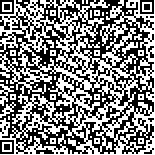| 摘要: |
| [摘要] 目的 分析SCN8A基因突变相关癫痫脑病的临床与遗传学特征。方法 选择2018年1月至2020年12月福建省立医院儿科收治的SCN8A基因突变相关癫痫病患儿8例,均经医学外显子测序及Sanger测序验证。收集其临床病历资料和基因检测结果进行总结分析。结果 8例患儿起病年龄中位数为6个月,男6例,女2例。癫痫发作类型有7种,3例存在≥3种发作类型。出现言语迟缓5例,肌张力低下4例,共济失调4例,步态障碍2例,智力低下5例。除1例脑电图正常外,其余7例发作间期脑电图异常,主要为多灶性放电。8例均为错义突变,其中未报道突变4例。新发突变5例,遗传杂合突变3例,临床表型各有差异。3例位于结构域C端内的突变,表型也有差异。结论 SCN8A基因相关癫痫是一种谱系疾病,新发突变可出现轻度温和至重度癫痫脑病表现,遗传杂合突变也可出现癫痫脑病的表现。突变方式与表型无相关性。突变位点在结构域中分布与突变来源及临床表型无关联。 |
| 关键词: SCN8A基因 癫痫脑病 基因突变 临床特征 |
| DOI:10.3969/j.issn.1674-3806.2021.12.08 |
| 分类号:R 729 |
| 基金项目:福建省卫生健康科研人才培养项目(编号:2019-CXB-17) |
|
| Analysis of clinical and genetic characteristics of 8 children with epilepsy related to SCN8A gene mutation |
|
LIN Meng, CHEN Lang, LIN Quan, et al.
|
|
Provincial Clinical College of Fujian Medical University, Department of Pediatrics, Fujian Provincial Hospital, Fuzhou 350001, China
|
| Abstract: |
| [Abstract] Objective To analyze the clinical and genetic characteristics of epilepsy related to SCN8A gene mutation. Methods Eight children with SCN8A gene mutation-related epilepsy who were admitted to Department of Pediatrics, Fujian Provincial Hospital from January 2018 to December 2020 were selected, all of whom were verified by medical exome sequencing assay and Sanger sequencing. The patients′ clinical medical records and genetic testing results were collected for summary and analysis. Results The median age of onset in the 8 pediatric patients was 6 months, including 6 males and 2 females. There were 7 types of epileptic seizures in these patients, of which 3 cases had more than 3 types of seizures. There were 5 cases of speech delay, 4 cases of hypotonia, 4 cases of ataxia, 2 cases of gait disorder, and 5 cases of mental retardation. Except for 1 case with normal electroencephalogram(EEG), the other 7 cases had abnormal interictal EEG, mainly multifocal discharge. All the 8 cases had missense mutations, among whom 4 cases had unreported mutations. Five cases had de nove mutations and 3 cases had genetic heterozygous mutations, and their clinical phenotypes were different. The phenotypes of the 3 mutations located in the C-terminalnd of the domain were also different. Conclusion SCN8A gene-related epilepsy is a pedigree disease, and the de nove mutation may show mild to severe epilepsy encephalopathy, and the hereditary heterozygous mutation may also show epilepsy encephalopathy. There is no correlation between mutation mode and phenotype. The distribution of mutation sites in the domain has no correlation with mutation source and clinical phenotype. |
| Key words: SCN8A gene Epilepsy encephalopathy Gene mutation Clinical characteristics |

